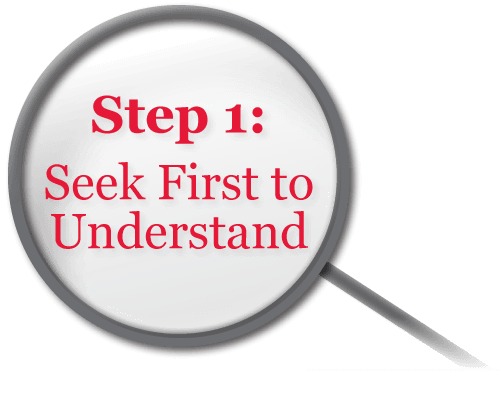Critical Steps To Understanding The Sales Cycle
As most sales professionals know; at the heart of every sales endeavor and at the heart of most businesses is the sales cycle. This is the process or cycle that takes place that results in sales and ultimately the success of a company. Understanding the sales cycle is extremely important for a sales representative. Here are five steps to understanding the sales cycle. Keep in mind that these steps are progressive and moving from one step to the next normally takes time, patience and commitment depending on the readiness of your client.
Step One: Forming The Relationship
A great deal of the sales process relies on being able to provide your customer what they need or want; but before you can do that you need to figure out what those needs and wants are. The first step in the sales cycle involves getting the attention of your customer and helping them understand how your product or service can help them. This involves getting them to listen to you, but it more importantly, it involves learning how to ask the right questions and listening to them. A good rule of thumb here is to listen twice as much as you speak. The first step also involves qualifying the prospect. Some questions you will want to have answered include; do they have the need for your service? Do they have the budget to afford your service? Are they the decision maker or are their other parties involved in making the final decision (in regards to purchases of your service/product)?
Step Two: Developing Interest
Once you have the attention of your client and have neutered the lead so that they are informed of who you are and what you are offering, you can start to identify exactly what their more specific needs are. By asking questions and engaging in two-way conversations you will be able to determine their needs. Use this knowledge to figure out how your product or service can serve their mentioned problems. By now, you will also know what kind of prospect they are and you will learn how to sell them. You will learn if they require a great amount of detail, communication and personal interaction, or if they prefer direct facts that are straight to the point.
During this stage, you will talk about your product or service, explain how it benefits the customer and determine if they are still interested. Likewise, this is a good point to determine if the prospect will be a good cultural fit for you as a client. If they seem like they will require more work that will eat into your profits, you may want to go your separate ways. Do this by simply suggesting another firm that would be a better fit for them. This way you can keep them happy and don’t risk bad word of mouth being developed around your company name.
Step Three: Providing a Solution to The Problem
This step, also known as the conviction stage involves two things. You know their areas of pain, now you must convince them that your product or service will ease that area of pain. You can also point out additional benefits they can expect by engaging with your product/service. You must also communicate to them that your company can provide them the best solution for their problems. Although there are other companies out there, do not specifically bring up your competition unless they ask you. It is best sales practice to concentrate your time and efforts on what your company offers.
Step Four: Developing Desire
During this stage of the sales cycle; emotions often come into play and the customer should begin to emotionally buy into your company’s product or service. Begin to paint the picture your prospect needs to visualize your solution actually resolving their problem. They will automatically develop a desire for your company’s solution. However, just because they want your product or service it doesn’t necessarily mean they will buy; things like price may still prevent them from taking action.
Step Five: Placing the Order
The final stage in the sales cycle is when the customer decides to move forward with your business and place an order for a product or a service. Don’t be afraid to ask your client for the order, this is the reason you have been talking with him and he/she has been talking with you. You must ask for a signed contract and be confident when doing so. This is where the rubber meets the road and not only you earn your commission, but you earn the opportunity to earn more opportunities through additional business and referral business.
Happy Selling!
The Sales Coaches & Sales Trainers at The Sales Coaching Institute



